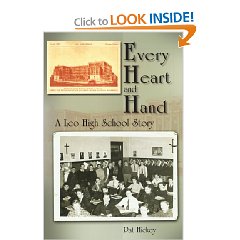
“Knowledge and wisdom seek a covenant with holiness.” Pope John Paul II alluding to St. John Cantius
In the introduction to John Sullivan's 2001 study of Catholic schooling Catholic Education: Distinctive and Inclusive the author developed a metaphor that struck me as profound. The book discusses the polarities of Catholic education as distinctive from the other educational paths; public and independent as well as other denominational schools, while inviting all to participate. In Chapter One, Sullivan notes the diminished influence of religious orders on Catholic education and remarks "The 'orchestra' now plays without benefit of some interesting 'instruments.' By that he mean the charisms that marked the educational methods which distinguished the religious orders operating individual schools.
Vatican II ( 1962-'65) seemed to accelerate the growing secularism in America. Post-WWII GI Bill Catholics viewed themselves more American than Catholic, especially those with college and post-graduate educations. By the 1970's Catholic education, in particular religion departments, adopted more Clown Jesus Superstar undercoating than the more durably simonized protective coatings of a Jesuit, Augustinian, Carmelite, or Dominican education. Ask too many Catholics today what is the different and you would most likely be answered, "Hey, they're all the same."
Religious discernment and judgement in general has suffered from an almost universal dumbing down.
What has occurred through vocation decline and the Catholic-lite religious education dynamics is the absence of charisms that marked, distinguished and glorified Catholic education. Religious Orders have distinct charisms. An example, noted in a recent monograph by a member of the Congregation of Christian Brothers (Irish Christian Brothers) notes the crisis that order has faced - "The charism usually proposed for Edmund Rice is that 'he heard the cry of the poor' and there has been a stress on his clothing, feeding and teaching the extremely poor and marginalised urban underclass to assist the condemned, the gaoled, the deprived, the oppressed and the desperate. While true as far as it goes, 'he heard the cry of the poor' has tended to be interpreted in an increasingly secular world in an increasingly secular way. It is true that the poor need bread (or rice!) or the skills to plant better grain, but, In fact, the desperately poor need Christ. The increasingly marginalised require salvation as much as the rich, the middle-class or anyone else. This tends to be obscured." The article concludes - The charism of Edmund Rice was to instruct ignorant boys and young men in the Catholic faith - Gerald Kilmartin, c 1989
Brother Kilmartin seems to be addressing the diluting of the charism during the 1960s. Ignorant boys can have Dads with comfortable bank accounts as well as boys who come to school without a square meal in their bellies or two nickels in their jeans. The charism was stretched by some in the Congregation in order to avoid the classroom and opt to be Junior Joseph the Workers, living in a monastery with three hots and cot, while working at a factory in Clearing as a personal ministry. A teaching order teaches. When the mission statement gets skewed, why bother? Vocations plunged.
All Catholic schools and especially the first Irish Christian Brother school in Chicago, Leo High School, operate like vineyards: grapes differ. A connecting branch must get the operating growing and eventually the finished products flowing. There are no brothers at Leo and there has not been one teaching, coaching or administering since the death of Brother Francis R. Finch in 1999 and the Congregation's forced retirement of Brother John Steve O'Keefe in 2005. The brothers withdrew from Leo as a congregation in 1991. Leo High School remains a Catholic school of the Archdiocese of Chicago and managed to maintain something of the charism of the Irish Christian Brothers. Alumni who were educated by the brothers make up a good portion of the faculty. Alumni support for the school is robust. Most encouraging is the presence of former Brother Peter W. Doyle.
Peter Doyle, now married, began his teaching career at Leo in 1967 and served many years as an English teacher, religion teacher, coach and was hired by Leo President Bob Foster as a principal. When Mr. Foster retired Pete Doyle returned to serve as teacher, coach and campus minister. The Alumni are delighted. The older silver maned contemporaries of mine still call him Bro Doyle and the young gents Mr. Doyle. Mr. Doyle is a an important cut of the vine, because he is a direct link to the charism that sparks Leo's mission. He still reads the Divine Office daily and generated great interest in the rosary, especially among the non-Catholic African American students.
Catholic schools were built in order protect the faith of children from the radical Protestant, now Progressive secular, doctrines imposed on students. Catholic schools developed within a tradition of scholarship and methodology - in fact many methodologies - with the result of training the children of the faithful enact the rituals, immerse themselves in the stories and traditions of the Catholic faith, and live the learned virtues as adults.
It matters that there are distinctions. A Jesuit education is different from the one a Leo Man received, all the while both are powerfully Catholic. When distinction is obscured, diluted, neglected, or ridiculed, the whole is diminished. Catholics who accepted anything will swallow anything. If that is the case, why bother?
Catholic schools must strengthen identity through the distinctive and inclusive qualities of the many charisms.
The orchestra needs the right instruments.





No comments:
Post a Comment